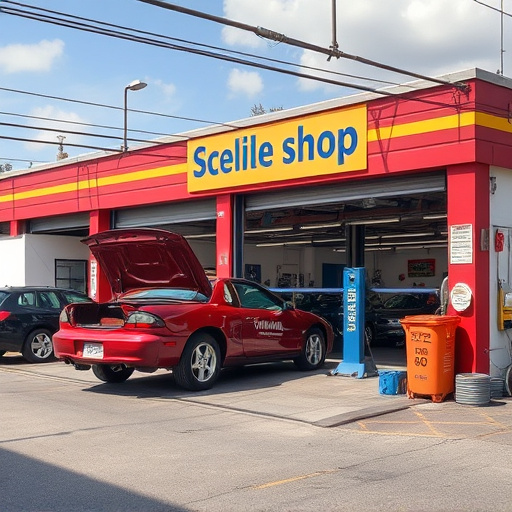Patient-Directed Reimbursement (PDR) enhances patient control over medical expenses and treatment choices, improving satisfaction, engagement, adherence to plans, recovery outcomes, and partnerships between patients and providers. Maximizing PDR benefits involves understanding policy details, proactive communication among stakeholders, transparent procedures, tracking KPIs like successful repairs, average times, and customer satisfaction through real-time software tools, and analyzing customer feedback for continuous improvement.
Maximizing Patient-Directed Reimbursement (PDR) benefits has emerged as a powerful strategy to enhance patient outcomes and improve healthcare accessibility. This article delves into the next steps for leveraging PDR’s potential, focusing on understanding its profound impact on patients’ lives, implementing effective utilization strategies, and measuring success through tracking key metrics. By exploring these aspects, healthcare providers can ensure optimal PDR benefits usage.
- Understanding PDR's Impact on Patient Outcomes
- Implementing Strategies for Efficient Benefit Utilization
- Measuring Success: Tracking PDR Benefits Maximization
Understanding PDR's Impact on Patient Outcomes

Patient-Directed Reimbursement (PDR) has emerged as a game-changer in healthcare, offering patients greater control over their medical expenses and treatment choices. By understanding the profound impact of PDR on patient outcomes, healthcare providers can maximize its benefits and foster a more patient-centric approach. This innovative system enables patients to access services like auto body services or luxury vehicle repair, ensuring they receive quality care while managing their financial commitments effectively.
When patients are given the autonomy to choose and manage their healthcare expenses, it leads to increased satisfaction and engagement. PDR encourages proactive participation in healthcare decisions, which is especially beneficial for complex procedures such as car body repair. Patients can now make informed choices, ensuring they receive the best possible care while staying within their budget. This shift towards patient empowerment has the potential to improve adherence to treatment plans, enhance recovery outcomes, and foster a stronger partnership between patients and healthcare providers.
Implementing Strategies for Efficient Benefit Utilization

Maximizing PDR (Physical Damage Repair) benefits requires a strategic approach to ensure every claim is handled efficiently and effectively. The first step involves understanding the specific coverage details within your policy, including deductibles and approved repair methods. Once this foundation is laid, implementing tailored strategies for benefit utilization becomes more manageable.
For instance, when dealing with hail damage repair or vehicle bodywork claims, proactive communication between policyholders, insurance providers, and collision repair centers is key. Encouraging policyholders to promptly notify their insurers about the incident paves the way for quicker claim processing. Similarly, ensuring transparency and clear communication among all parties involved in the repair process can streamline procedures, minimizing delays often associated with hail damage repairs.
Measuring Success: Tracking PDR Benefits Maximization

Measuring success is a critical aspect of maximizing PDR (Paintless Dent Repair) benefits. By implementing robust tracking systems, automotive body shops can objectively evaluate their dent removal processes and performance. This involves setting clear KPIs (Key Performance Indicators), such as the number of successfully repaired vehicles, average repair time, and customer satisfaction ratings. Utilizing advanced software tools designed for vehicle dent repair, shops can monitor these metrics in real-time, allowing for immediate adjustments to their techniques and procedures.
Moreover, tracking PDR benefits extends beyond internal assessments. It involves gathering and analyzing feedback from customers, who often appreciate the convenience of dent removal services offered by automotive body shops. By combining qualitative and quantitative data, shops can gain valuable insights into what makes a repair successful from both operational and customer perspectives. This holistic approach ensures that PDR benefits are not just maximized but also sustained over time, enhancing the overall reputation of the automotive body shop and fostering customer loyalty.
Maximizing Patient-Directed Reporting (PDR) benefits is a strategic approach that can significantly enhance patient outcomes and engagement. By understanding the impact of PDR, implementing efficient utilization strategies, and tracking success through measurable data, healthcare providers can navigate the next steps towards optimizing these benefits. Embracing this process ensures patients receive the most value from their health resources, fostering a stronger partnership between caregivers and those they serve.













